The Northern Hawk Owl is a medium sized owl that typically lives and breeds in the far north. They are rarely seen in south eastern Ontario unless factors such as a lack of food in their native habitat displaces them southward in search of a reliable food source. This winter a lone Northern Hawk Owl has shown up about an hours drive north west of us and it has become quite a celebrity with many birders and photographers making a point of seeing this locally rare bird.
I will prepare another blog post about the Northern Hawk Owl, however with this post I would like to highlight a behaviour that is fairly common amongst raptors; the practice of caching food for future consumption. Northern Hawk Owls are opportunistic diurnal raptors that take prey whenever it presents itself. Thus if the owl captures more food than its immediate nutritional requirements demand it will hide, or cache, that food in a safe place for later consumption. Typical spots for caching food are inside tree cavities or betweens forks of tree branches. It is a behaviour that I was aware of but had never observed until watching this Northern Hawk Owl. It was also a pleasure to be able to catch the caching process with the camera and I trust you enjoy the educational aspect of the images in this post.
The first step for the owl is to catch the prey. Northern Hawk Owls typically hunt voles and small to medium sized birds. The owl caught this vole outside of my view however returned with it to a nearby perch.
After catching its prey, the owl will often use its wings to spread out around the prey shielding it from the attention of nearby raptors and predators in a behaviour known as mantling. Although not a classic mantling example, you can see in the next image how the Hawk Owl has completely consealed (well, almost) its prey while on its perch.
After closely surveying the area and detecting no threats, the owl moved to its chosen cache site in the fork of a small nearby tree.
The Hawk Owl deftly and rather forcefully placed the vole into the crook of the tree trunk and branches.
Once the vole was securely placed and well hidden in the tree the Northern Hawk Owl repositioned himself on a nearby perch and immediately began hunting for its next catch.
It was interesting to observe that the owl, as well as looking for new food, also kept watch on the locations of its cached food sources. At one point the owl took flight from its perch and travelled about fifty yards to knock a large black squirrel out of a tree that was presumably getting too close to a cached vole. The squirrel fell about 40′ to the ground and didn’t seem to be harmed in the process. The Northern Hawk Owl returned to its original perch and continued to hunt, confident that the squirrel would leave the cache alone. Those of you who have been following this blog will notice two things; its been two years since the last post, and the website looks very differnt now compared to when you last saw it. The old website was so dated in its appearance that I was embarassed to post anything and athough not a good excuse, there just wasn’t enough free time to take the time required to learn how to create a new fresher looking website. Today’s version is better than the old one, however still requires lots of tweaking to get it to where it needs to be. If you find any bugs or have any design suggestions please feel free to leave a comment and I’ll do my best to make the improvements.
Happy New Year to everyone and I look forward to keeping in touch via this website, Facebook or Instagram.

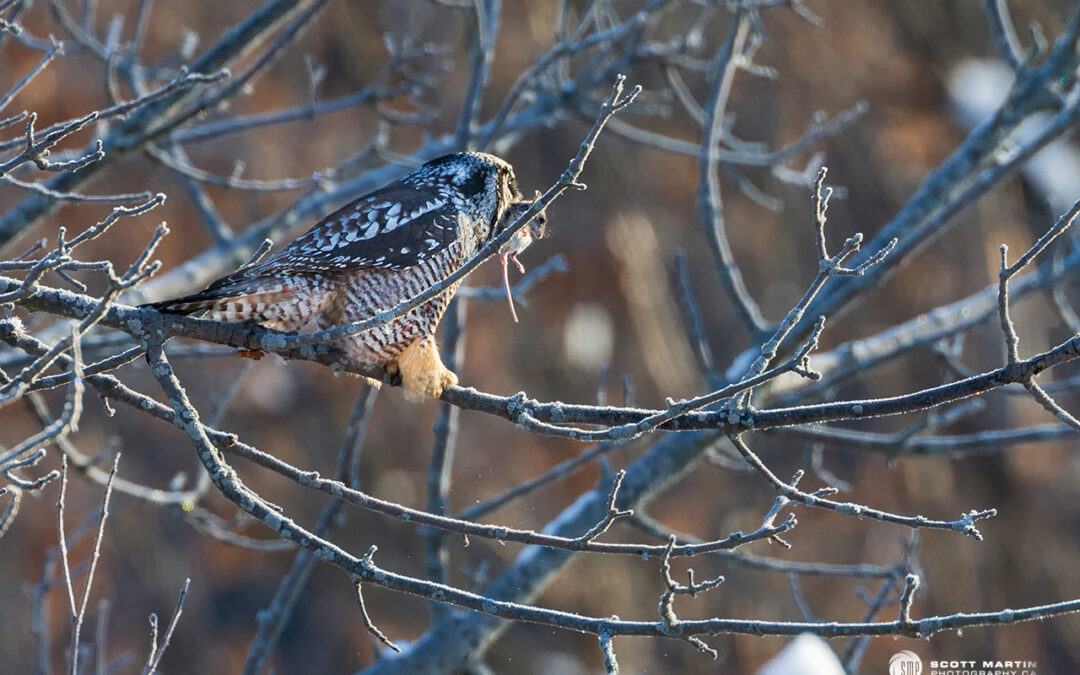
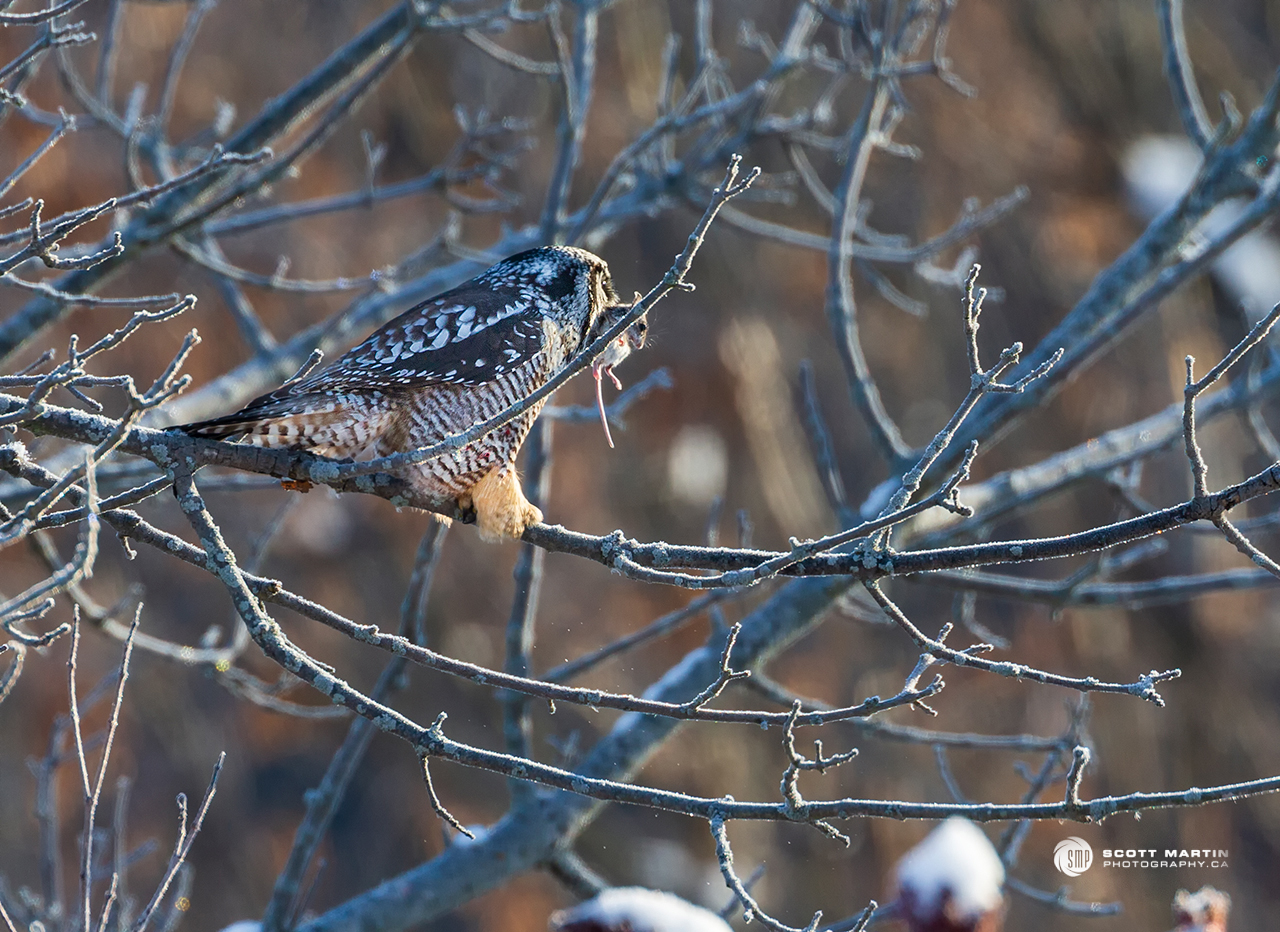
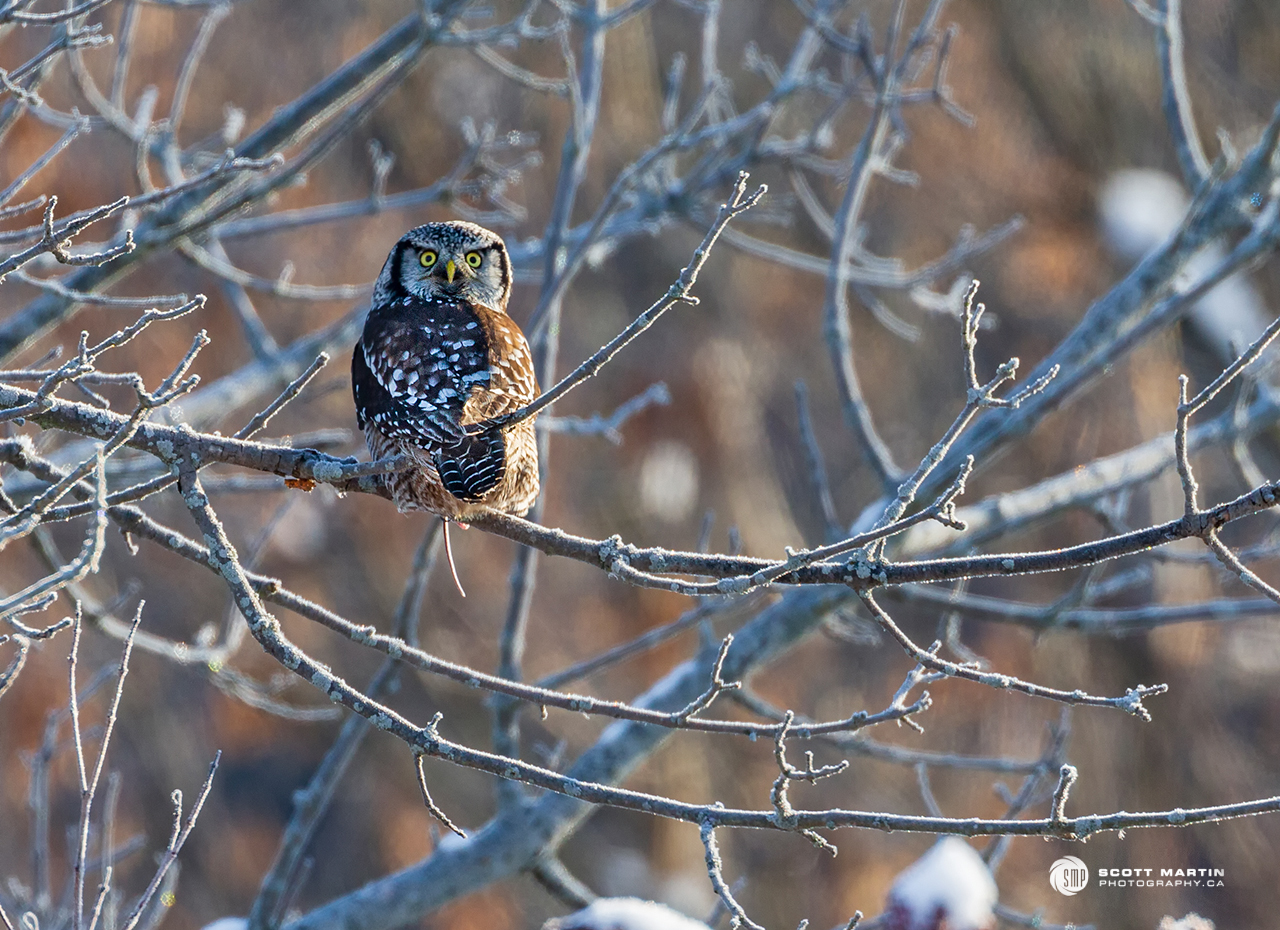
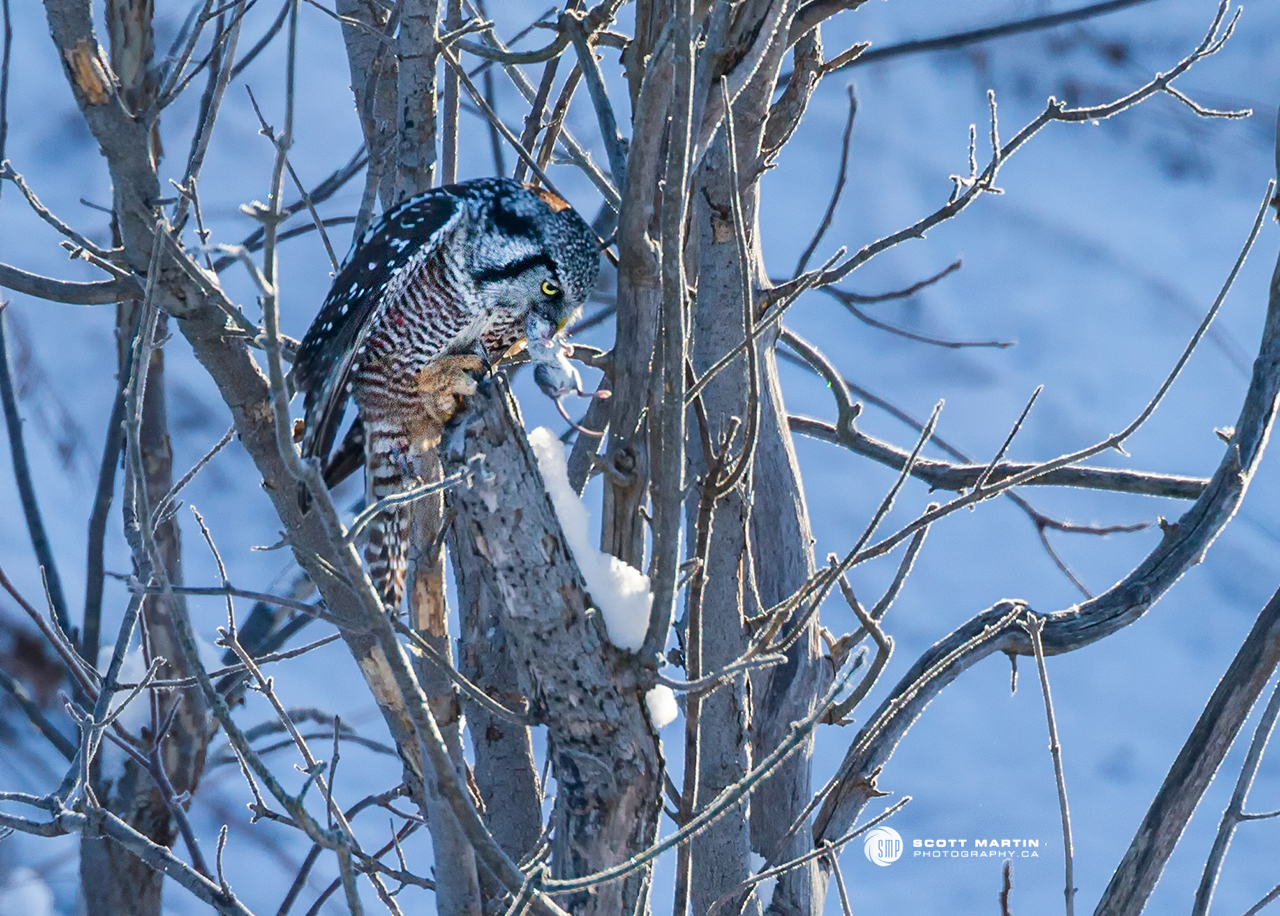
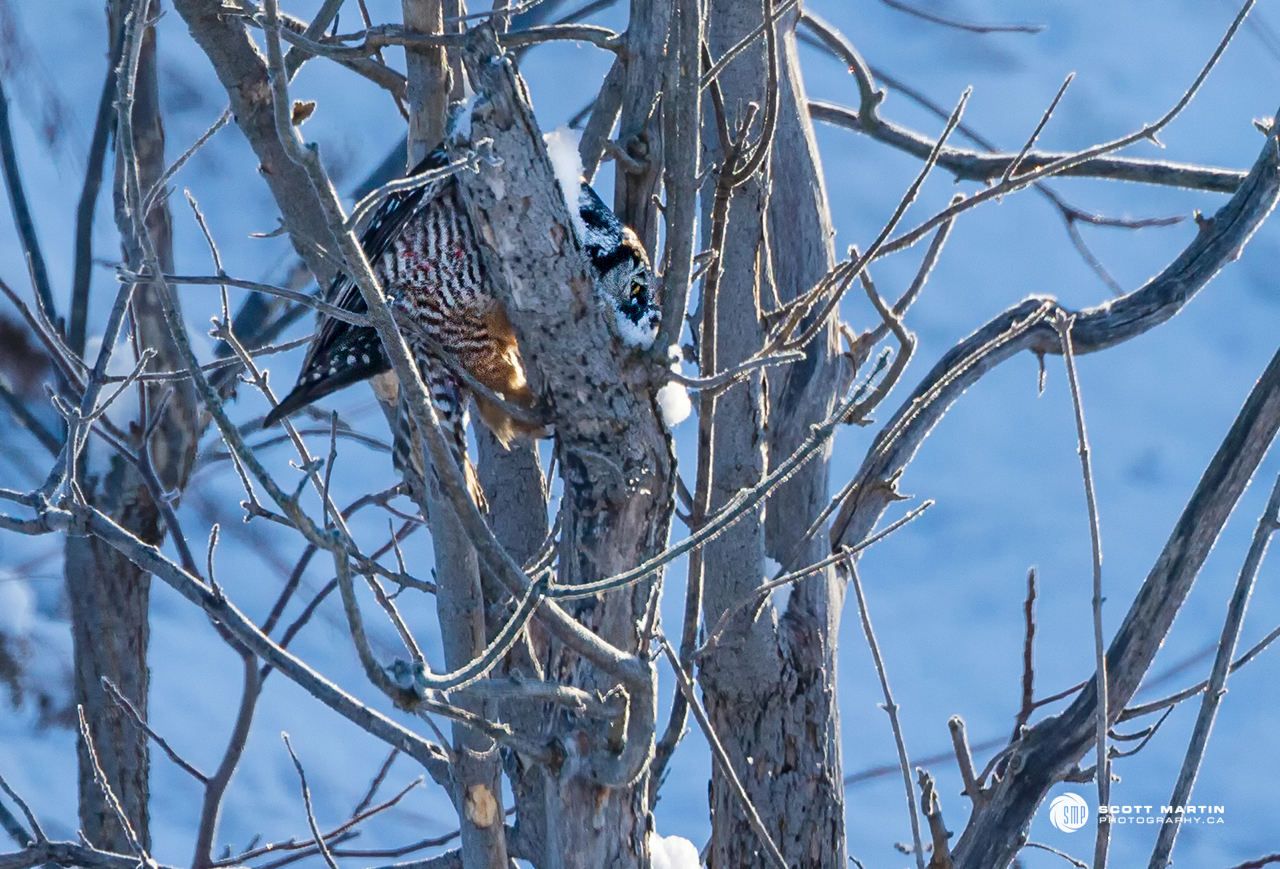
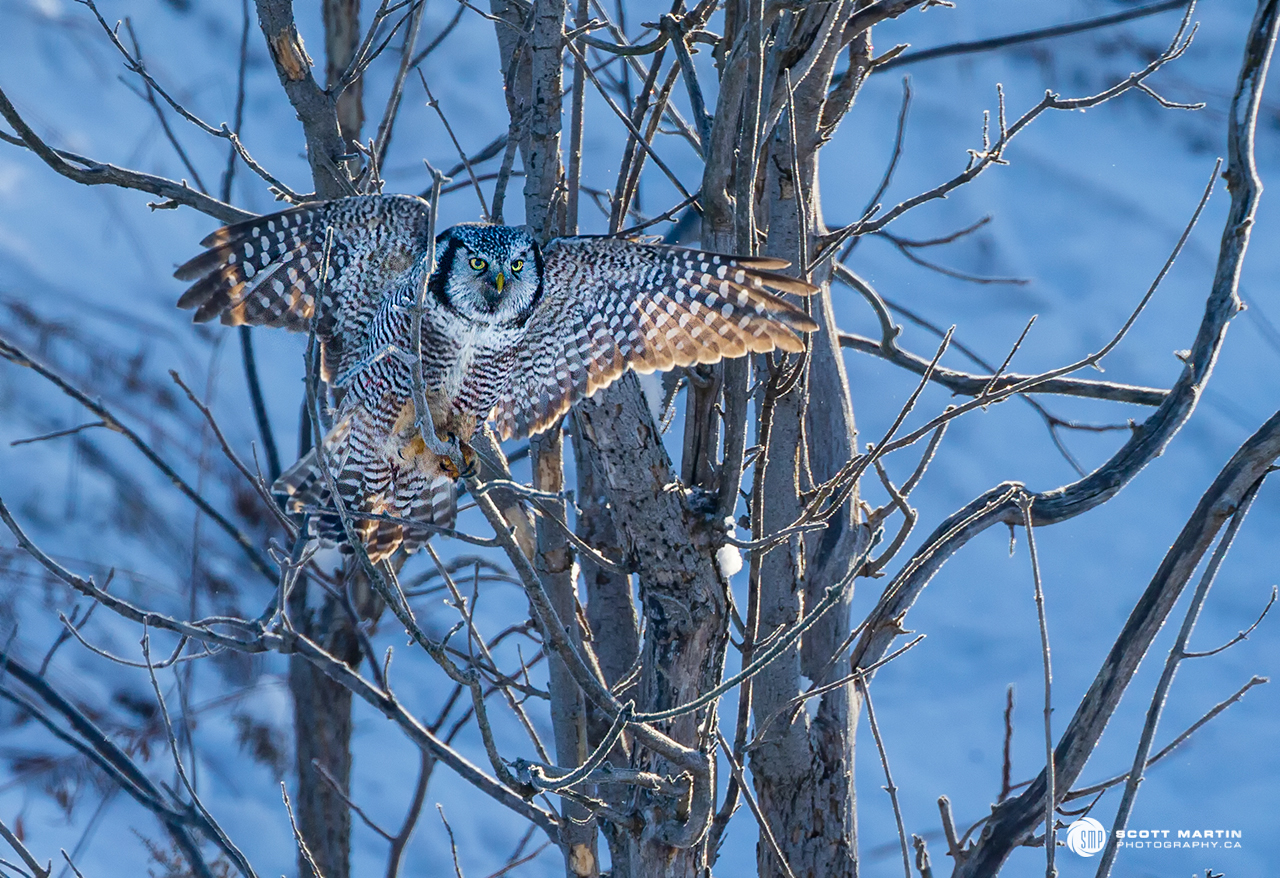
Great photos Scott and I really appreciate the information you provide.
Happy New Year to you and your family.
Thanks Barb, great to hear from you and a very Happy New Year as well.
Fascinating photos Scott and the information you pass along with them is much appreciated. Thank you very much and yes, your new website is looking good.
Thanks very much Donna and I’m happy you enjoyed the post and the new website design.
Test comment from iPhone 🙂